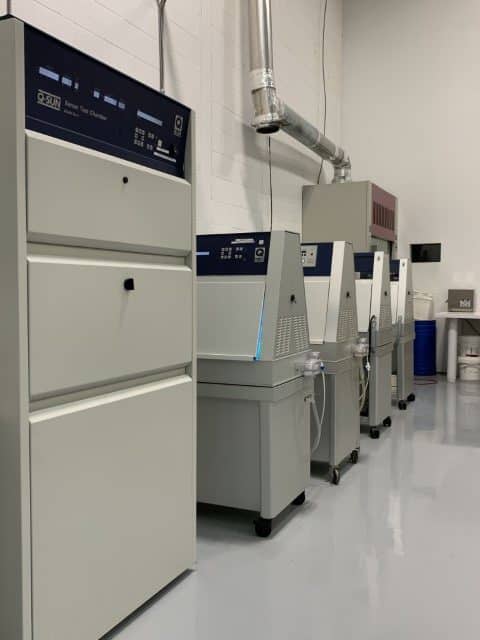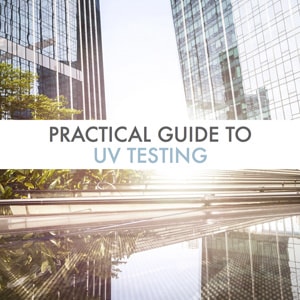ASTM D4303
Standard Test Methods for Lightfastness of Colorants Used in Artists' Materials
ASTM D4303 is a standard test methods for lightfastness of colorants used in artists’ materials. It is used to approximate the color change over time in pigments used in artists’ paintings in indoor exposure. Micom offers ASTM D4303 testing as part of its coating testing services.

Use and factors to be considered
The retention of a pigment’s chromatic properties over a long period of years is crucial in artists’ paintings. Accelerated exposure induces color changes that may occur are a result of following long term indoor illumination and therefore inform producers and users of artists’ paints of suitable pigments. Color measurements, such as ASTM D2244, are made on specimens before the exposure and are then compared with readings made after the exposure.
ASTM D4303 testing exposes the specimens to daylight filtered through single-strength window glass or to laboratory test sources to simulate on an accelerated basis the effects of indoor exposure using at least two of the four methods that ASTM D4303 encompasses. These test methods apply to oil, resin-oil, acrylic, emulsion, alkyd, watercolor paints as wells as gouache paints and are based on xenon arc and fluorescent light sources.
Typical Experimental parameters for ASTM D4303 testing
Test Method A
- Exposure: natural daylight filtered through glass
- Total spectral radiant exposure: to be specified, but usually 1260 MJ/m2
Test Method B
- Exposure: Irradiance from daylight fluorescent lamps
- Timing of light/dark cycle: to be specified
- Total spectral radiant exposure: to be specified, but usually 1260 MJ/m2
- Test duration: 9 months
Test Method C
- Exposure: Xenon-arc irradiance simulating daylight filtered through glass
- Radiant exposure (at 340 nm): to be specified, but typically 1260 MJ/m2
- Irradiance level: to be specified, but typically 0.35 W/m2/nm
- Relative humidity: to be specified, but usually 55 ± 5 %
- Black panel temperature: to be specified
- Dry bulb temperature: to be specified
- Panel rotation schedule: to be specified
- Exposure cycle: to be specified
Test Method D
- Exposure: Irradiance from very high output cool white fluorescent lamps and intermittent exposure to soda-lime glass filtered fluorescent UV sunlamps representative of illumination in an indoor environment
- Initial cool white (CW) UV irradiance in W/m2: to be specified
- Final CW UV irradiance in W/m2: to be specified
- Initial fluorescent sunlamps (FS) UV irradiance in W/m2: to be specified
- Final FS UV irradiance in W/m2: to be specified
- Panel rotation schedule: to be specified
Oil, resin-oil and acrylic emulsion paint samples must be exposed by test method A and either test method B, C or D while watercolors, gouache including other paints sensitive to moisture must be exposed to the test method C and either test method B or D.
If you have any questions about ASTM D4303 or if you need guidance in deciding which test method or which test conditions should be used for your precise needs, we invite you to contact us today. It will be our pleasure to answer your questions and help you with your custom material testing requirements.
If you are curious to learn more about other test methods related to ASTM D4303, we invite you to read more on Coating testing, Accelerated aging and UV testing.
Practical UV Testing Guide
Sunlight exposure can have harmful impacts on carbon-based
materials such as coatings, polymers, textiles, and many others.
Learn more about our in-laboratory UV testing process in this guide.


